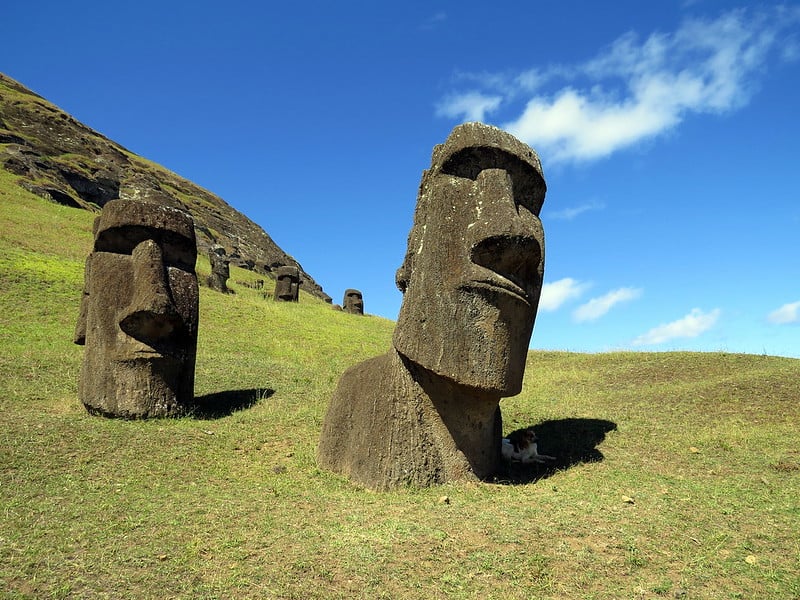
Archaeologists have finally unraveled the mystery of how the colossal Moai statues were transported and erected on Easter Island. Recent research indicates that small groups of the island’s indigenous Rapa Nui people utilized ropes to maneuver these towering figures into place, showcasing an ingenious method shaped by limited resources. This breakthrough was published in the Journal of Archaeological Science, shedding light on a centuries-old enigma.
The study reveals that the statues were moved in an upright position using a controlled rocking motion along specially prepared roads. This technique, which involved guiding the statues forward in a zigzag pattern, harmonizes with both the island’s landscape and the Moai’s design. High-resolution 3D models of the statues were developed by researchers to examine their structure, revealing that the Moai were intentionally crafted with broad, D-shaped bases and a forward tilt—features that made them ideal for upright movement.
Replica Experiment Proves Upright Movement Possible
To validate their theory, the research team constructed a full-scale, 4.35-ton replica of a Moai with the same forward-leaning design. With the help of 18 participants, they successfully moved the replica 100 meters in just 40 minutes. Carl Lipo, a co-author of the study and archaeologist at Binghamton University, explained that once the statue began moving, it required surprisingly little effort. Participants pulled with one arm, conserving energy while maintaining momentum.
Lipo noted,
“The technique appears to become even more effective with larger statues. As the size increases, the method’s efficiency and necessity become more apparent, suggesting it may have been the only practical solution available to the Rapa Nui.”
Ancient Roads Offer Physical Evidence of Movement Strategy
The research also underscores the importance of the island’s ancient road system. Archaeologists discovered multiple roads, each about 4.5 meters wide with a concave shape, which likely helped stabilize the statues during transport. Lipo explained that these roads were not merely paths but integral to the statue-moving process itself. In many instances, roads overlapped or ran parallel, indicating that new sections were cleared and utilized progressively as the statues were moved.
The team highlighted that no other existing theory offers a more plausible explanation for how the statues reached their platforms. Lipo emphasized,
“No evidence has emerged to disprove the upright walking method, and each new discovery continues to reinforce its validity.”
Implications for Understanding Rapa Nui Engineering
The findings provide fresh insights into the creativity and engineering prowess of the Rapa Nui people, whose methods have now reshaped the understanding of how the Moai statues of Easter Island came to stand. This development follows years of speculation and debate among historians and archaeologists, who have long been fascinated by the island’s enigmatic monoliths.
According to experts, this discovery not only highlights the Rapa Nui’s ingenuity but also their ability to adapt to the island’s challenging environment. By leveraging the natural landscape and their own resourcefulness, the Rapa Nui were able to achieve what many thought impossible.
The move represents a significant advancement in archaeological research, offering a more comprehensive understanding of the cultural and historical context of Easter Island. As more studies are conducted, it is anticipated that further details about the Rapa Nui’s methods and motivations will emerge, providing a richer narrative of this unique civilization.
Meanwhile, the research team plans to continue their work, exploring other aspects of the Moai statues and the Rapa Nui culture. This ongoing investigation promises to yield even more fascinating insights into one of the world’s most intriguing archaeological mysteries.







